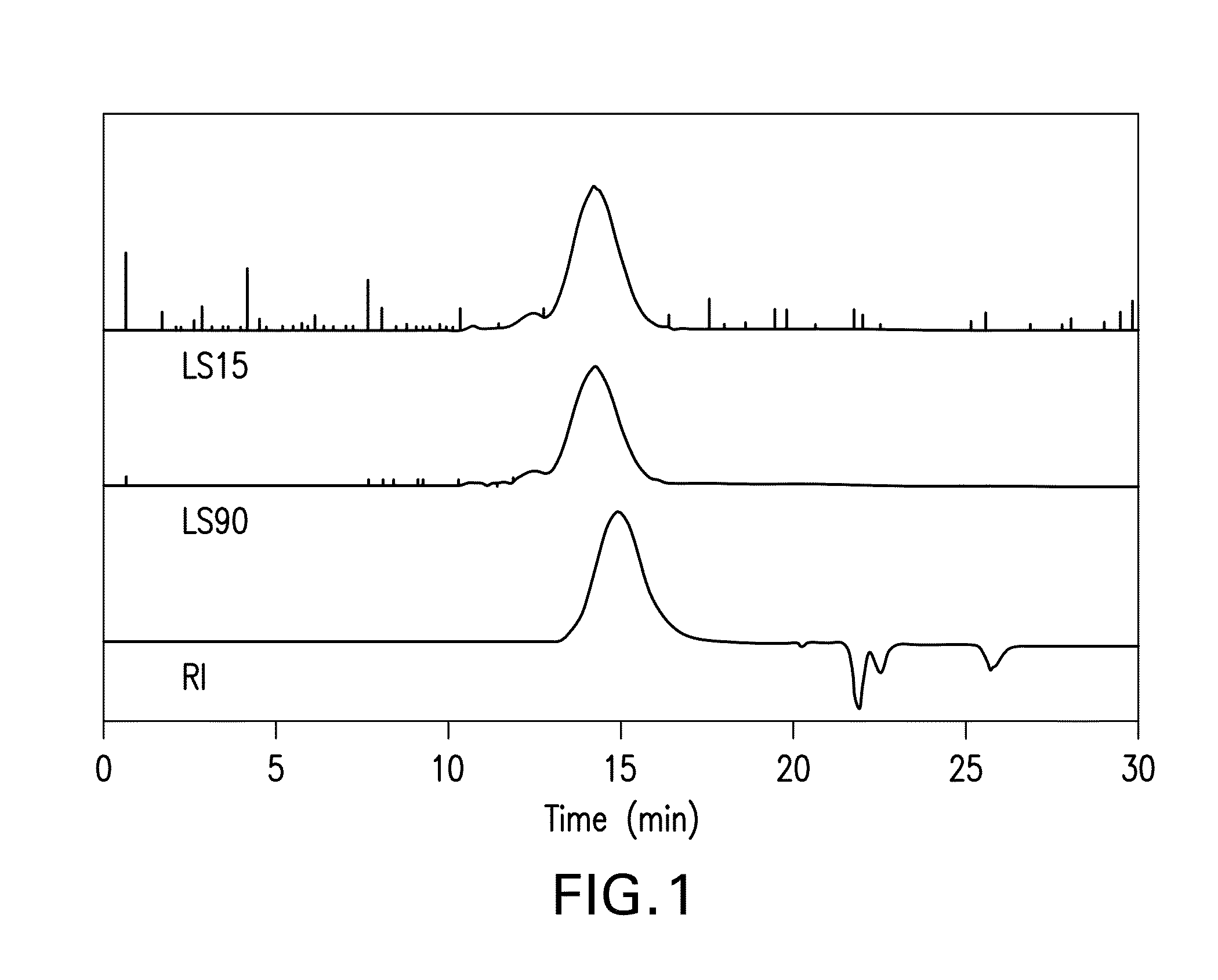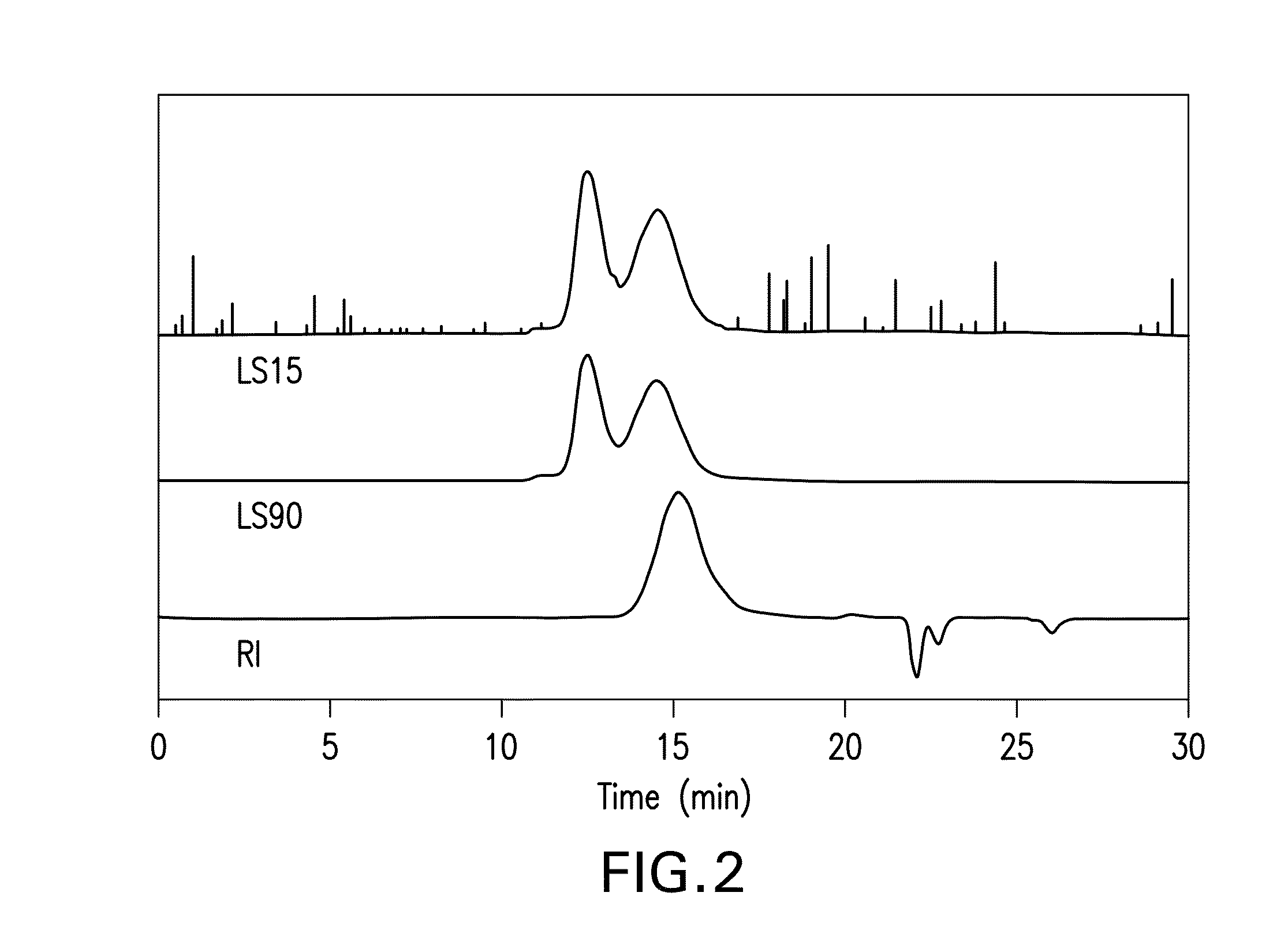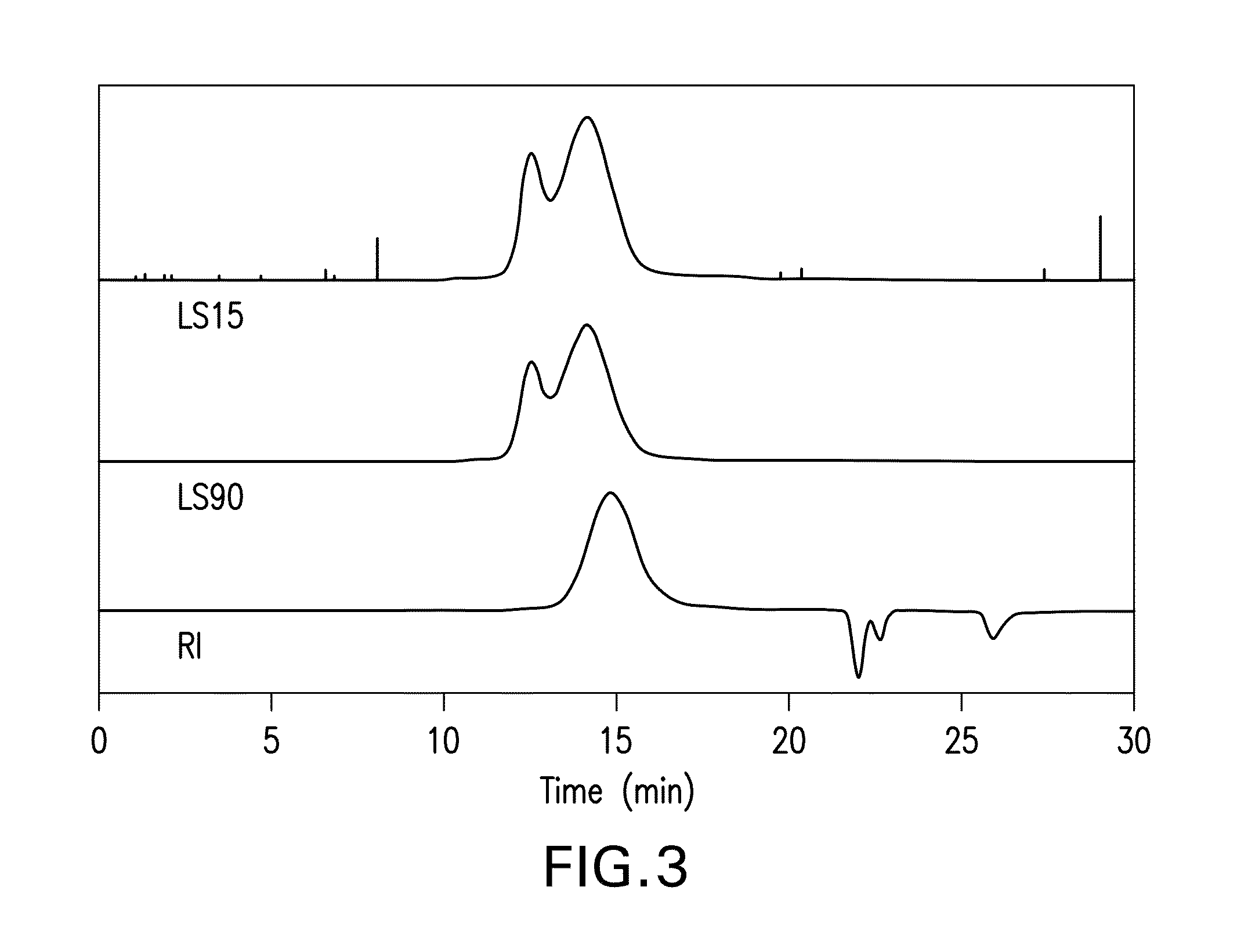Reversible Derivatization of Poly (Aryl Ether Ketones)
a derivatization and polymer technology, applied in the field ofsolubilizing polymers, can solve the problems of limited ability to characterize paeks, little information about the mass distribution of these materials, and the technique does not provide a measure of the polydispersity index,
- Summary
- Abstract
- Description
- Claims
- Application Information
AI Technical Summary
Benefits of technology
Problems solved by technology
Method used
Image
Examples
example 1
PEEK- and 1,2 Ethanedithiol (EDT)
[0070]In Example 1, thioacetalization of PEEK is performed using 1,2 ethanedithiol (EDT) according to Reaction (3):
[0071]Under a nitrogen atmosphere, approximately 0.752 g (approximately 7.99 mmole) of EDT is added to a stirred solution of approximately 1.153 g of PEEK (from Avecia plc) in approximately 20 mL dichloromethane (CH2Cl2) and about 5 mL trifluoroacetic acid (TFA). The EDT addition is followed by addition of approximately 0.571 g (about 4.02 mmole) boron trifluoride diethyl etherate (BF3Et2O). The solution is stirred for about 18 hours, during which time the solution develops a deep red color. The solution is then diluted with about 50 mL of CH2Cl2 and subsequently poured into about 100 mL cold methanol. The resulting solution is filtered to recover a fine white powder of poly (ether ether dithioacetal). Approximately 1.456 g of poly (ether ether dithioacetal) is recovered, for a yield of approximately 100%.
[0072]GPC characterization of th...
example 2
PEEK and 1,2 Ethanedithiol (EDT)
[0076]In Example 2, thioacetalization of PEEK is performed using 1,2 ethanedithiol (EDT) according to Reaction (4):
[0077]Under a nitrogen atmosphere, approximately 0.393 g (approximately 4.17 mmole) of EDT is added to a stirred solution of approximately 0.576 g of PEEK (150G, from Victrex plc) in approximately 20 mL dichloromethane (CH2Cl2) and about 2 mL trifluoroacetic acid (TFA). The EDT addition is followed by addition of approximately 0.280 g (about 1.97 mmole) boron trifluoride diethyl etherate (BF3Et2O). The solution is stirred for about 3 days, during which time the solution develops a deep red color. The solution is then poured into about 100 mL cold methanol. The resulting solution is filtered to recover white fibers of poly (ether ether dithioacetal). Approximately 0.718 g of poly (ether ether dithioacetal) is recovered, for a yield of approximately 98%.
[0078]GPC characterization of the poly (ether ether dithioacetal) yields the traces illu...
example 3
PEEK and 1,2 Ethanedithiol (EDT)
[0082]In Example 3, thioacetalization of PEEK 450G (from Victrex plc) is performed using 1,2 ethanedithiol (EDT) according to Reaction (5):
[0083]Under a nitrogen atmosphere, approximately 0.393 g (approximately 4.17 mmole) of EDT is added to a stirred solution of approximately 0.576 g of PEEK 450G in approximately 20 mL dichloromethane (CH2Cl2) and about 2 mL trifluoroacetic acid (TFA). The EDT addition is followed by addition of approximately 0.280 g (about 1.97 mmole) boron trifluoride diethyl etherate (BF3Et2O). The solution is stirred for about 3 days, during which time the solution develops a deep red color. The solution is then poured into about 100 mL cold methanol. The resulting solution is filtered to recover white fibers of poly (ether ether dithioacetal). Approximately 0.718 g of poly (ether ether dithioacetal) is recovered, for a yield of approximately 98%.
[0084]GPC characterization of the poly (ether ether dithioacetal) yields the traces ...
PUM
| Property | Measurement | Unit |
|---|---|---|
| glass transition temperatures | aaaaa | aaaaa |
| time period | aaaaa | aaaaa |
| time period | aaaaa | aaaaa |
Abstract
Description
Claims
Application Information
 Login to View More
Login to View More - R&D
- Intellectual Property
- Life Sciences
- Materials
- Tech Scout
- Unparalleled Data Quality
- Higher Quality Content
- 60% Fewer Hallucinations
Browse by: Latest US Patents, China's latest patents, Technical Efficacy Thesaurus, Application Domain, Technology Topic, Popular Technical Reports.
© 2025 PatSnap. All rights reserved.Legal|Privacy policy|Modern Slavery Act Transparency Statement|Sitemap|About US| Contact US: help@patsnap.com



